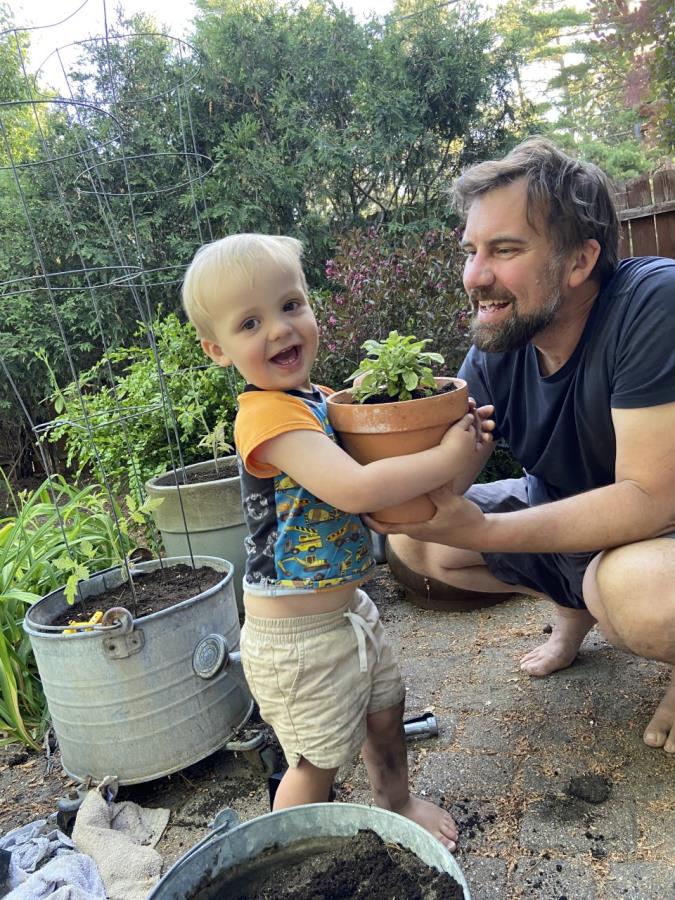One of the goals, when we prepare our classroom environments for the children, is to make it like a second home for them. We observe our learners so we can design an environment that acts as its own teacher or guide for the children. Each aspect of the classroom provides experiences that translate to learning opportunities for the child. Young children do not typically respond well to being given verbal limits; if we build the limits into the environment, we will not have to verbally tell them what is safe or expected. For example, if a child is climbing on tables, we can redirect the child to the area in the environment that is appropriate for climbing.
The primary focus when setting up your home environment to meet your child’s needs is to make space for your child in every area of your home. Every space is valuable to learning and young children are always observing what we are doing. Here are some suggestions for how this could look in different rooms:
Bathroom: Have a low mirror and cup available for them to retrieve their toothbrush and hairbrush. Set up a step stool so they can reach the sink and toilet independently.
Kitchen: Have their dishes available in lower cabinets if possible so they can retrieve them independently. Find child sized tools to allow them to participate in preparing family meals and snacks. Have a low work surface or find a way to raise them up to your work surface with a stool or learning tower. Allow children to help you load and unload the dishwasher and wash dishes at the sink.
Dining Room: Allow your child to help set and clear the table. They are used to doing this work in their classroom and would likely love to help out at home. At the beginning, this may look like all the cutlery and plates ending up in a pile in one place, but as children grow older they learn what goes where and can help with this task. For young children, find a raised chair that allows them to get in and out independently.
Living room: Display some of their toys in orderly shelves. Have a small book shelf with a few books (picture rails work well for younger children) or place a few favorites or current library loans in a small basket.
Bedroom: Try to keep the child’s bedroom as a place for sleeping and dressing if possible. Have a limited amount of clothing options available for them to choose between (two shirts, two pants, etc.), and make seasonally inappropriate clothing unavailable and out of sight. Allowing young children the opportunity to make small choices empowers them to make big decisions later on.
Mudroom: Have a low hook for your child to hang their coat. Make a designated space for their mittens, hats, and boots so they can be more independent in dressing and undressing. Have a low seat that they can sit on when dressing and undressing for outside. In the summer, try to put winter clothes out of sight.
Other ideas: Have a watering can available near where you keep plants or near the sink (for older children). Work with your child to know when the soil feels dry or moist. Have a designated space where your child can get cleaning tools like dust cloths, a broom and dustpan, and rags for wiping up spills.
Outdoors: Have a space for their shovel, rake, broom, and any other outdoor tool they may need to help with tasks outside. Involve your child in yard work, outdoor maintenance, and gardening. Allow them to scoop bird seed into your bird feeder.
Because young children have such a need for order, having designated spaces for their belongings really helps them know how to meet their needs. If they are carrying a cup of water to the table and it spills, knowing where to get a cloth and being able to do that independently helps them to take ownership and responsibility for their space. Hand-in-hand with this, it is important to limit clutter as much as possible so they are not distracted by excess things in their space. Adults can tune out visual clutter in a way that children cannot.
Another thing to consider when preparing your home environment is preparing yourself. Many of the suggested activities and ideas for setting up your home are based on having enough time to do them. Some days, there isn’t enough time for your child to spend the extra minutes to fully dress themselves for the day. If that’s the case, be honest with your child about when they will have the chance to do that work themselves and that you need to help them just now.
Dr. Montessori said “the best for the smallest;” the home environment is the child’s first environment, and it provides the major building blocks with which they will create themselves. Part of the child’s work during the first six years of life is to adapt to their family’s culture. They are gaining so much of what it means to be a human from their home environment. A prepared home environment encourages the child to trust the world and his experiences in it.
